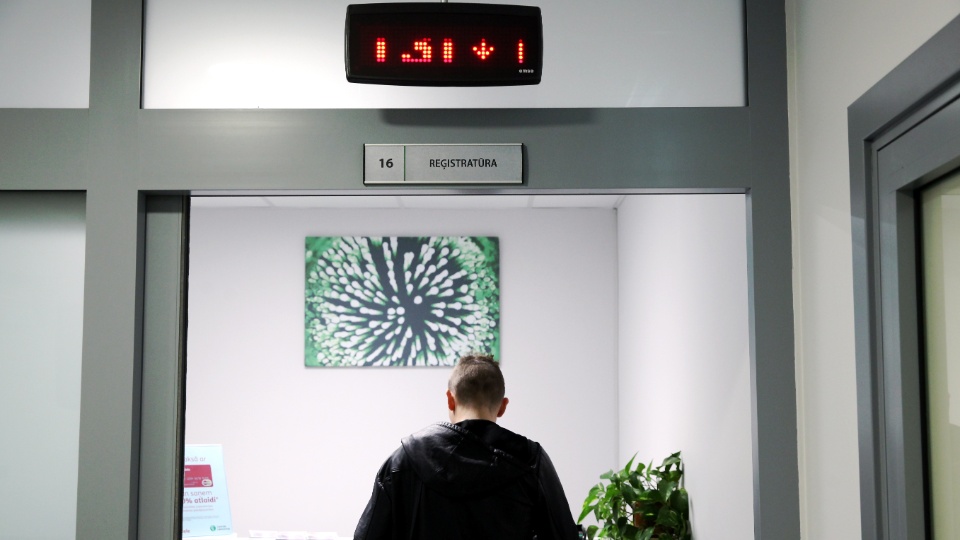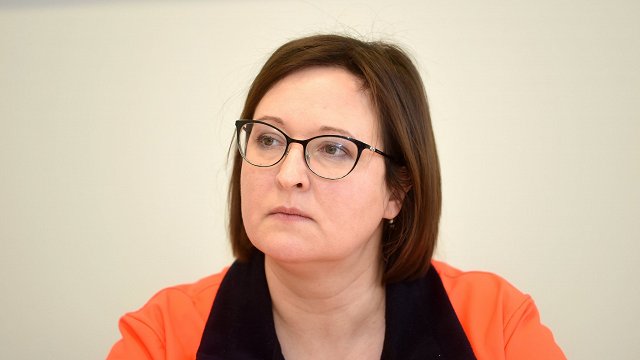Medics no longer have requests: they have orders. Instead of their usual routines, they get teams. Still, working hands are sorely lacking. Patients are flooding in one after the other, and ever more. To cope with the flow of patients, Latvian hospitals are reshaping their departments, while the number continues to grow.
Edīte Kauseniece, doctor of the Latvian Infectology Centre (LIC), shared her experience with Latvian Radio. She has worked with students after her shift at the hospital. She is tired. Normally she is an outpatient doctor, not at the hospital. At the beginning of October, however, she was appointed to replace her retired colleague and has been still working in COVID-19 hospital since then, as she calls the Infectology Centre. Kauseniece explained that no one had asked if she wanted to work with COVID-19 patients, and pointed out that the whole LIC was one big department of COVID-19.
There is a small part of the so-called transit-patients—whose COVID-19 status isn't yet known. They are placed in a separate department and are awaiting results. However, most turn out to be coronavirus positive. Some remain in hospital, some go home for treatment.
She spoke of free beds in hospitals:
“The number of places is already very, very close to the point that we don't have anywhere to put [the patients]. And the Tuberculosis and lung disease clinic, which also currently has a COVID-19 hospital, has also exhausted its limit.”
“No one is going to put these patients in the corridors. At least for the time being, and we hope that we will not come to this. Gender distribution should also be taken into account. Disease severity should also be taken into account. It should be noted that these patients should be able to receive oxygen, that requires certain safety measures and there are also purely technical restrictions, so that
the formal number of beds does not correspond to the actual number of beds,” explained Kauseniece.
And here, the crisis painfully illuminates the problems that healthcare has felt for years. Problems that doctors have talked about in the media and in government meetings. If doctor Kauseniece could now ask the government for something, she would only have one requirement – more doctors and staff. Medics are currently working on the brink of exhaustion, with too many patients per doctor.
Kauseniece said that outpatient care is also suffering: “The management is forced to reorganize human resources (..) doctors' loads increase. It hasn't been perfect before, but now outpatient care is also suffering.”
While doctors are trying to manage COVID-19 patients, those with hepatitis C, HIV, AIDS who cannot be deprived of outpatient care, have to wait.
"Oncological observation is suffering, all these things which were already subpar are suffering even more on this COVID background," said Kauseniece.
Medics also fear COVID-19 infection.
She said that there were doctors who refused to work: “Medical workers are only human, they are scared, too; there are those who simply refuse to work with this kind of patient. We live in a democratic country where no one can be forced to work. You can understand, because there are also medical workers with chronic diseases.”
Sanita Janka, head of the quality of medical treatment department at Ministry of Health, said that the situation is under control: “I would say that our healthcare system is now sufficiently prepared to provide services. We hope to manage with university and regional hospitals, but if there is a need, we will also involve other hospitals.”
However, the readiness of health authorities will not be enough if people are reckless.
Janks also explained the importance of protecting medics: “This issue of human resources, which we cannot buy with any money, it is what it is, we have to count on it. Therefore, it must be understood that medical practitioners move in public transport, go in shop and when they become infected, it is a very big loss for us.”
Soap, masks, two meters is how anyone can help medics.
Doctor Kauseniece spends five hours a day in full equipment.
“It is not the masks that limit our freedom. It is the pandemic,” Kauseniece said.





























